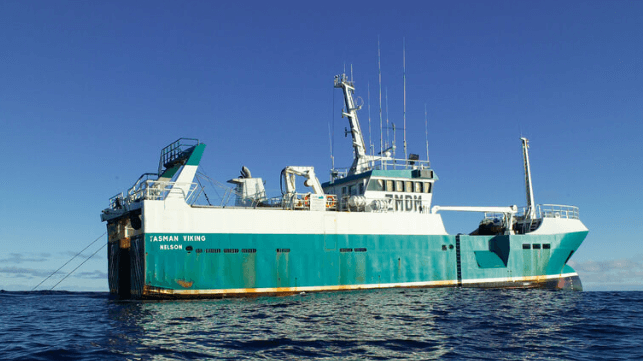One Trawler's Coral Damage Forces Fishery Closure at Lord Howe Rise

A commercial fishing vessel in New Zealand is finding itself yet again on the spot after allegedly destroying deep sea corals in international waters.
The trawler Tasman Viking is accused of scooping up corals in Lord Howe Rise, a region known for diverse marine life. The accidental removal, which occurred last month, has forced authorities in New Zealand to suspend fishing in the Lord Howe area of the Tasman Sea between New Zealand and Australia until 2026.
This is the second time in as many months that the 320-ton Tasman Viking is finding itself in trouble over destruction of corals in the Lord Howe area. In June last year, the trawler was confiscated after the crew failed to report bycatch of about 20 kilograms of rare bamboo corals in an incident that occurred in October 2020. The vessel was released after the operator paid a fine of NZ$52,000.
In the latest incident, Tasman Viking destroyed gorgonian corals (sea fans), with a small amount of black and stony corals, according to an official at the Ministry for Primary Industries. This time the crew reported the accidental catch, which was weighed by the Fisheries New Zealand observers.
The Convention on the Conservation and Management of High Seas Fisheries Resources in the South Pacific rules sets an allowable limit of 15 kilos that bottom trawlers can catch. International fishing rules dictate that any catch above the set limits must be communicated to all nations that are members of the international regulator, the South Pacific Regional Fisheries Management Organization (SPRFMO).
While environmentalists condemned the damage, New Zealand Oceans and Fisheries Minister Shane Jones wants the limits reviewed. “We need to revisit what's an acceptable amount to extract accidentally when harvesting,” he was quoted by local media RNZ.
Greenpeace, however, wants a total ban on bottom trawling. “It’s reckless environmental vandalism to bulldoze coral, an essential building block for ocean life, especially in the middle of a biodiversity crisis,” said Ellie Hooper, Greenpeace oceans campaigner.
The waters around Lord Howe Rise are said to be rich and abundant and include a chain of seamounts or underwater mountains that are home to a variety of marine life, from coral to whales and seabirds, including the antipodean albatross.
The controversy surrounding Tasman Viking's destruction of corals comes when New Zealand is joining the global community to mobilize resources to protect coral reefs, which despite being vital ecosystems that support over 25 percent of marine life and support the resilience of nearly one billion people, are facing imminent collapse.
During a United Nations Biodiversity Conference in Colombia this week, New Zealand was among the nations that pledged support to the Global Fund for Coral Reefs (GFCR) to the tune of $10 million. “Coral reefs are vital to the health and wellbeing of coastal communities, including across our Pacific neighborhood. New Zealand is proud to join the GFCR, dedicated to coral reef preservation,” said Winston Peters, New Zealand Minister of Foreign Affairs.
GFCR wants to source $3 billion in public and private funding to support conservation efforts focused on climate-resilient coral reefs and to transition coastal economies to a "reef-positive" orientation.
